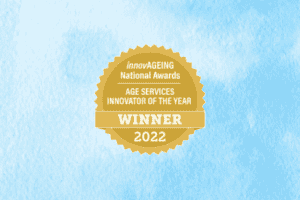 Aged Care Operators in Australia are required to have Continuous Improvement Plans (CIPs) as part of their operations. This requirement comes from the Aged Care Quality and Safety Commission. The plans must be supplied to the Commission for review upon request.
Aged Care Operators in Australia are required to have Continuous Improvement Plans (CIPs) as part of their operations. This requirement comes from the Aged Care Quality and Safety Commission. The plans must be supplied to the Commission for review upon request.
The Commission favours using the Plan-Do-Check-Act (PDCA) cycle in these plans. PDCA is a widely used quality improvement system that employs an iterative, results-based methodology.
How does the PDCA approach apply to Aged Care operators? Let’s take a look.
PLAN Phase
First, you need to know what needs improvement. Here are several ways these deficiencies can be identified:
- Resident Feedback: Residents and their families need ways to input what they think needs improvement.
- Audits: Issues can be identified through self-assessment or by an outside auditor.
- Staff: People working directly with residents can provide feedback to management.
Once identified, you need to plan ways to address these concerns. Residents, staff, and other stakeholders need to be engaged as you seek solutions. Out of this planning, you can determine what actions should be taken to remediate the deficiencies.
DO Phase
Once an action plan is formulated, the next step is to implement it. This may require testing the improvement in a controlled or limited environment, then assessing if it should be deployed organization wide.
Make sure resources (staff, funding, contractors, etc.) are available to enact the change. Remember that adjustments may need to be made to the plan as it is put into place.
The steps taken and decisions made should be documented for future reference. Keep the people involved informed of the change and solicit feedback.
CHECK Phase
Simply put, “Did it work?” The degree of checking depends on the impact of the change. Simple changes can often be assessed with a management review; more substantial ones may require stakeholder feedback, surveys, audits, and quantitative measurements.
This phase could determine that the change was not effective or only marginally so. In that case, different options need to be tried. The evaluations need to be documented to provide proof of why the change was seen to be effective or not.
ACT Phase
If the change was successful, the next step is to roll it out. This is when the improvement is put into action and the facility sees its operations advance! But be patient — it may take time to see the results, so further monitoring and assessment of the change is required.
As the improvement is enacted, Staff needs to be informed of any new procedures and, if required, trained on them. New or revised policy and procedure documents may need to be generated and provided to affected parties.
Residents and other stakeholders need to be kept in the loop. A positive change is always good news! It is important that they see that their concerns are being addressed.
If the change was unsuccessful, it is time to cycle back to the Plan phase, using the information gathered in the earlier phases to devise and implement a more appropriate action plan.
Plan-Do-Check-Act
The above is a short summary of PDCA’s iterative approach. The result is a cycle of Continuous Improvement that benefits both the operators and residents.
See below for a description of our eCIP software that makes managing the required Continuous Improvement Plans much easier
*******
eCIP is Continuous Improvement Plan software that helps you implement the Plan-Do-Check-Action cycle. Designed specifically for Aged Care Operators, eCIP matches Improvement Items to the Aged Care Standards, showing a direct correlation between the improvement and its corresponding standard.
The program also provides Resident Feedback management to make sure concerns are addressed and resolved. It generates Tasks from Improvement Action Plans and tracks progress towards successful implementation of the changes.
Why rely on Word templates or Excel spreadsheets for your critical Improvement processes? Find out how our eCIP software can make your work easier!
Contact us at sales@assetjourney.com or request a demo here: https://www.assetjourney.com/ecip-for-aged-care-operators/
We look forward to helping you with your Continuous Improvement efforts!








